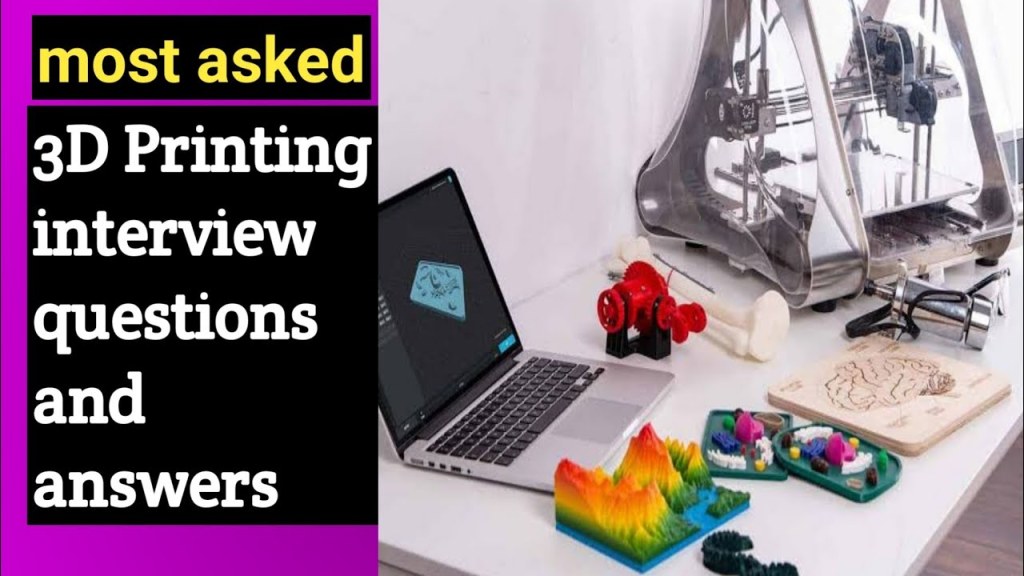Printing Technology Interview Questions
Introduction
Hello Readers,
Welcome to this article on printing technology interview questions. In this article, we will discuss some common interview questions that you may come across when applying for a job in the printing technology industry. Whether you are a fresh graduate or an experienced professional looking for a new opportunity, these questions will help you prepare for your interview and increase your chances of success.

Image Source: ytimg.com
Now, let’s dive into the world of printing technology and explore the questions that may come your way during an interview.
What is Printing Technology?
Printing technology refers to the methods, techniques, and equipment used in the reproduction of text and images on various surfaces, such as paper, fabric, plastic, and more. It involves processes like typesetting, plate-making, image reproduction, and finishing. The printing industry plays a crucial role in the dissemination of information, advertising, packaging, and many other sectors.
Who Uses Printing Technology?
Printing technology is utilized by a wide range of industries and businesses. Publishing houses, advertising agencies, packaging companies, newspaper offices, and commercial printing companies are some of the major users of printing technology. Additionally, many businesses have in-house printing facilities to meet their printing needs.
When Was Printing Technology Invented?

Image Source: betterteam.com
The origins of printing technology can be traced back to ancient times. The Chinese are credited with inventing woodblock printing around the 9th century. However, the invention of the printing press by Johannes Gutenberg in the 15th century revolutionized the industry. This invention allowed for mass production of books and paved the way for the dissemination of knowledge on a large scale.
Where is Printing Technology Used?
Printing technology is used in various settings, including commercial printing presses, publishing houses, newspaper offices, packaging companies, and more. It is also employed in industries such as textiles, electronics, manufacturing, and advertising. In today’s digital age, printing technology is also integrated with online platforms to provide personalized and on-demand printing services.
Why is Printing Technology Important?
Printing technology plays a crucial role in our daily lives, even in the digital age. It allows for the creation of physical copies of information, advertising materials, packaging, and more. Additionally, printing technology enables businesses to establish their brand identity, communicate their message effectively, and reach their target audience. It also provides opportunities for creativity and innovation in design and print production.
How Does Printing Technology Work?
Printing technology involves several processes that vary depending on the printing method used. Some common printing methods include offset printing, digital printing, flexography, gravure printing, and screen printing. Each method has its own set of equipment and techniques, but they all involve the transfer of ink onto a surface to create the desired output. From setting up the artwork to the final finishing touches, printing technology encompasses a range of steps that require precision and expertise.
Advantages and Disadvantages of Printing Technology
Advantages:
1. Versatility: Printing technology can be used on various surfaces and materials, allowing for a wide range of applications.
2. Tangible Output: Printed materials provide a physical and tangible representation of information, which can be easily shared and distributed.
3. Longevity: Printed materials have a longer lifespan compared to digital content, making them suitable for archival purposes.
4. Customization: Printing technology allows for personalized and customized outputs, catering to individual preferences and needs.
5. Aesthetic Appeal: Printed materials can be visually appealing, with options for different finishes, textures, and colors.
Disadvantages:
1. Cost: Printing technology can be expensive, especially for small-scale or one-off printing projects.
2. Environmental Impact: The production of printed materials can have a negative environmental impact, including the use of natural resources and generation of waste.
3. Limited Editing: Once printed, it can be challenging to make changes or updates to the content, requiring reprinting.
4. Time-consuming: Printing projects may require substantial lead time, especially for large quantities or complex designs.
5. Storage and Distribution: Printed materials require proper storage and distribution channels, which can add logistical challenges.
Frequently Asked Questions (FAQs)
1. Q: What are the different printing methods used in the industry?
A: The printing industry uses various methods, including offset printing, digital printing, flexography, gravure printing, and screen printing.
2. Q: How can I ensure the quality of the printed materials?
A: To ensure quality, it is essential to work with reputable printing companies, provide clear specifications, and conduct thorough quality checks.
3. Q: What are the emerging trends in printing technology?
A: Some emerging trends include 3D printing, sustainable printing practices, digitalization of the printing process, and the integration of printing technology with online platforms.
4. Q: How can printing technology benefit businesses?
A: Printing technology enables businesses to create brand awareness, effectively communicate their message, and provide personalized and visually appealing materials to their target audience.
5. Q: Are there any career opportunities in the printing technology industry?
A: Yes, the printing technology industry offers various career opportunities, including printing press operators, graphic designers, prepress technicians, and print production managers.
Conclusion
In conclusion, being well-prepared for a printing technology interview is essential to increase your chances of success. We have covered some common interview questions, provided an overview of printing technology, discussed its importance, advantages and disadvantages, and answered some frequently asked questions. Remember to research the company, practice your responses, and showcase your knowledge and skills during the interview. Good luck with your interview!
Final Remarks
Printing technology continues to evolve, driven by advancements in technology and changing market demands. It is crucial to stay updated with the latest trends and developments in the industry. The information provided in this article serves as a starting point for your exploration of printing technology interview questions. It is always recommended to do additional research and seek professional advice for a comprehensive understanding of the subject matter. Best wishes for your future endeavors in the exciting world of printing technology!